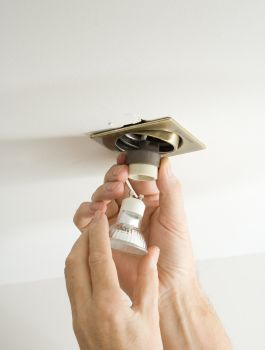Many of our customers have been looking for an easy AWG To mm conversion tool so we've made one. You can just select your AWG size from the pulldown box and we'll tell you the equivalent cable. We've even included an AWG to mm Conversion Table further down the page.
AWG to MM Cable Conversion Guide
When buying cut to length electrical wire or electrical cable, many UK and international buyers face difficulty when confronted with AWG sizing. Vice Versa, American buyers may be stumped when they are recommended a certain gauge of cable or wire, and don't know how to get it when confronted with mm.
What is AWG? The AWG standard was created by the Brown & Sharpe Company, a leading manufacturer of machinist technology in the late 1800s & early 1900s. The AWG standard was officially adopted & implemented as industry-standard sizing in 1857. Unfortunately, AWG does not fit comfortably in rounded mm or inches, so there will always need to be a small amount of rounding up or down depending on your need or purpose. If you want the technical formulae for converting between the two, it is as follows;
The n gauge wire diameter dn in millimetres (mm) is equal to 0.127mm times 92 raised to the power of 36 minus gauge number n, divided by 39: dn (mm) = 0.127 mm × 92(36-n)/39
Somehow we don't see ourselves nonchalantly calculating this in our heads every time we speak with an American customer, so we've made up a conversion table which we'd like to share for your convenience.
| AWG # | Diameter (mm) |
Diameter (inch) |
Area (mm²) |
Available Cable Size (mm²) |
|---|---|---|---|---|
| 0000 (4/0) | 11.684 | 0.46 | 107.2193 | 120 |
| 000 (3/0) | 10.4049 | 0.4096 | 85.0288 | 95 |
| 00 (2/0) | 9.2658 | 0.3648 | 67.4309 | 70 |
| 0 (1/0) | 8.2515 | 0.3249 | 53.4751 | 70 |
| 1 | 7.3481 | 0.2893 | 42.4077 | 50 |
| 2 | 6.5437 | 0.2576 | 33.6308 | 35 |
| 3 | 5.8273 | 0.2294 | 26.6705 | 35 |
| 4 | 5.1894 | 0.2043 | 21.1506 | 25 |
| 5 | 4.6213 | 0.1819 | 16.7732 | 25 |
| 6 | 4.1154 | 0.162 | 13.3018 | 16 |
| 7 | 3.6649 | 0.1443 | 10.5488 | 16 |
| 8 | 3.2636 | 0.1285 | 8.3656 | 10 |
| 9 | 2.9064 | 0.1144 | 6.6342 | 10 |
| 10 | 2.5882 | 0.1019 | 5.2612 | 6 |
| 11 | 2.3048 | 0.0907 | 4.1723 | 6 |
| 12 | 2.0525 | 0.0808 | 3.3088 | 4 |
| 13 | 1.8278 | 0.072 | 2.624 | 4 |
| 14 | 1.6277 | 0.0641 | 2.0809 | 2.5 |
| 15 | 1.4495 | 0.0571 | 1.6502 | 2.5 |
| 16 | 1.2908 | 0.0508 | 1.3087 | 1.5 |
| 17 | 1.1495 | 0.0453 | 1.0378 | 1.5 |
| 18 | 1.0237 | 0.0403 | 0.823 | 1 |
| 19 | 0.9116 | 0.0359 | 0.6527 | 0.75 |
| 20 | 0.8118 | 0.032 | 0.5176 | 0.75 |
| 21 | 0.7229 | 0.0285 | 0.4105 | 0.5 |
| 22 | 0.6438 | 0.0253 | 0.3255 | 0.5 |
| 23 | 0.5733 | 0.0226 | 0.2582 | See Below |
| 24 | 0.5106 | 0.0201 | 0.2047 | See Below |
| 25 | 0.4547 | 0.0179 | 0.1624 | See Below |
| 26 | 0.4049 | 0.0159 | 0.1288 | See Below |
| 27 | 0.3606 | 0.0142 | 0.1021 | See Below |
| 28 | 0.3211 | 0.0126 | 0.081 | See Below |
| 29 | 0.2859 | 0.0113 | 0.0642 | See Below |
| 30 | 0.2546 | 0.01 | 0.0509 | See Below |
| 31 | 0.2268 | 0.0089 | 0.0404 | See Below |
| 32 | 0.2019 | 0.008 | 0.032 | See Below |
| 33 | 0.1798 | 0.0071 | 0.0254 | See Below |
| 34 | 0.1601 | 0.0063 | 0.0201 | See Below |
| 35 | 0.1426 | 0.0056 | 0.016 | See Below |
| 36 | 0.127 | 0.005 | 0.0127 | See Below |
| 37 | 0.1131 | 0.0045 | 0.01 | See Below |
| 38 | 0.1007 | 0.004 | 0.008 | See Below |
| 39 | 0.0897 | 0.0035 | 0.0063 | See Below |
| 40 | 0.0799 | 0.0031 | 0.005 | See Below |
For AWG 23 and upwards - When using a cable to power mains voltages: (110v, 230v etc) the smallest conductor we recommend is 0.5mm. For audio, video, telephone, security cabling you may want to use smaller cables sizes where the voltage and current are smaller.
Things To Remember:
Wire Gauges run low to high - this means that the smaller a gauge number, the larger it is in mm. Conversely, a large number in AWG equates to a very small number of mm.
AWG sizes do not fit perfectly into mm or inches, so you may need to round up or down when safe to do so.
Cable sizes (including AWG) refer to the size of the conductor, not the total thickness of the cable including sheathing etc.
Do not confuse AWG (American Wire Gauge) with SWG (Standard Wire Gauge, the now largely redundant British Imperial standard which was superseded by mm.) as they are not equal. Always double-check to make sure you are buying the correct thickness of wire or cable.





















